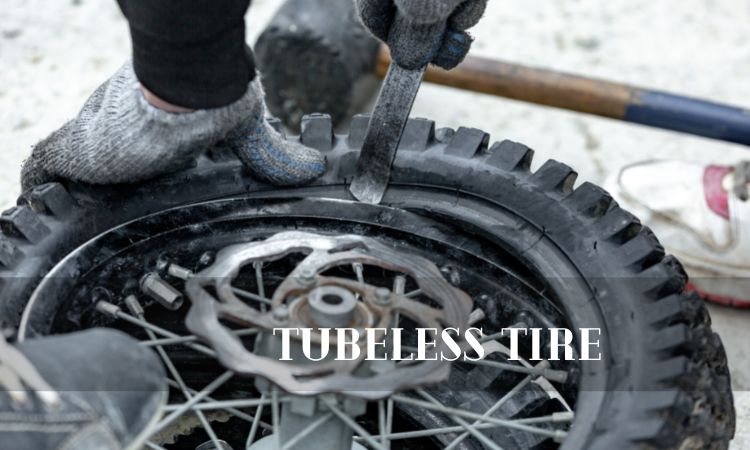Performance Tires Vs. All-Season Tires: Pros and Cons
When it comes to choosing tires for your vehicle, the decision often boils down to two options: performance tires or all-season tires.
As the saying goes, 'The rubber meets the road,' and the type of tire you choose can greatly impact your driving experience.
In this article, we will explore the pros and cons of performance tires and all-season tires, providing you with the information you need to make an informed decision based on your driving needs and preferences.
Key Takeaways
- Performance tires excel in wet weather and offer enhanced grip on wet surfaces.
- All-season tires provide decent traction in both dry and wet conditions and have a longer tread life.
- Performance tires offer superior grip on turns and stability at high speeds.
- All-season tires offer a balance between longevity and cost and provide a smoother ride with lower noise levels.
Traction and Grip
When comparing performance tires and all-season tires, it is important to consider the traction and grip that each type of tire offers in various driving conditions.
In terms of traction, performance tires excel in wet weather due to their specially designed tread patterns and rubber compounds that maximize grip on wet surfaces. These tires have deeper and wider grooves that effectively channel water away from the tire, reducing the risk of hydroplaning and maintaining contact with the road. Additionally, performance tires are engineered to maintain optimal tire temperature, which further enhances their grip on wet surfaces.
On the other hand, all-season tires are designed to provide adequate traction in a variety of weather conditions, including wet weather. While they may not offer the same level of grip as performance tires, all-season tires have a more balanced approach, delivering decent performance in both dry and wet conditions. They are equipped with a tread pattern that offers good water evacuation and grip on wet surfaces, reducing the chances of skidding or sliding.
Considering the traction and grip aspect, performance tires are more suitable for drivers who frequently encounter wet weather conditions and desire maximum grip and control. However, for those who prioritize versatility and do not frequently drive in extreme wet conditions, all-season tires offer a more practical option.
Transitioning into the subsequent section about handling and cornering, it is important to evaluate how performance tires and all-season tires differ in these aspects.
Handling and Cornering
When it comes to handling and cornering, performance tires offer superior grip on turns, providing enhanced control and maneuverability. They are designed to provide stability at high speeds, allowing for precise and responsive steering.
Additionally, performance tires have better traction in wet conditions, reducing the risk of hydroplaning and ensuring a safer driving experience.
Grip on Turns
While discussing the performance of performance tires versus all-season tires, it is crucial to consider the grip on turns as a determining factor. The grip on turns refers to the ability of a tire to maintain traction and control when navigating corners or curves.
Performance tires are specifically designed to provide enhanced grip on turns, allowing drivers to take corners at higher speeds with confidence. These tires often feature softer rubber compounds and specialized tread patterns that maximize grip and minimize tire wear.
On the other hand, all-season tires are designed to provide adequate traction in a variety of weather conditions, including rain and light snow. While they may not offer the same level of grip on turns as performance tires, they generally have longer tread life and shorter braking distances, making them a practical choice for everyday driving.
Stability at High Speeds
Moreover, performance tires provide exceptional stability at high speeds, allowing drivers to maintain control and confidently navigate corners and curves. This is due to their unique tire construction, which is specifically designed to handle the demands of high-speed driving. Here are two key advantages of performance tires in terms of high-speed stability:
- Enhanced grip: Performance tires are made with a softer rubber compound that offers increased traction, allowing for better grip on the road. This improved grip helps to keep the tires firmly planted, even when driving at high speeds.
- Stiffer sidewalls: Performance tires have stiffer sidewalls compared to regular tires, which helps to reduce the amount of flexing during high-speed maneuvers. This stiffness provides better stability and responsiveness, allowing for precise control and handling.
Transitioning into the subsequent section about 'traction in wet conditions,' it is important to note that high-speed stability is not the only factor to consider when choosing tires. Traction on wet surfaces is also a crucial aspect to ensure safe and confident driving in various weather conditions.
Traction in Wet Conditions
In addition to providing exceptional stability at high speeds, performance tires excel at handling and cornering in wet conditions, ensuring optimal traction and control on slippery surfaces. This is due to their unique tire tread design, which is specifically engineered to reduce the risk of hydroplaning. Hydroplaning occurs when a layer of water builds up between the tire tread and the road, causing the tires to lose contact with the road surface and resulting in a loss of control. Performance tires are designed with deeper and wider grooves in their tread pattern, allowing them to effectively channel water away from the tire and maintain contact with the road. This significantly reduces the risk of hydroplaning, providing drivers with increased safety and confidence in wet conditions.
To further illustrate the differences between performance tires and all-season tires in wet conditions, let's compare their characteristics in the table below:
| Performance Tires | All-Season Tires | |
|---|---|---|
| Traction on Wet Roads | Excellent | Good |
| Hydroplaning Risk | Low | Moderate |
| Cornering Stability | High | Average |
| Braking Performance | Excellent | Good |
| Handling Response | Quick and Precise | Moderate |
As shown in the table, performance tires outperform all-season tires in terms of traction on wet roads, with excellent cornering stability, braking performance, and handling response. They also have a lower risk of hydroplaning compared to all-season tires, making them a superior choice for drivers who desire freedom and confidence in wet conditions.
Performance in Wet Conditions
A significant factor to consider when assessing tire performance is the number of hydroplaning incidents experienced in wet conditions. Hydroplaning occurs when a layer of water builds up between the tire and the road surface, causing the loss of traction and control.
To make an informed decision about tire performance in wet conditions, it is important to consider the following:
- Tread Design: Tires with deep and wide grooves are designed to channel water away from the tire's contact patch, reducing the risk of hydroplaning.
- Rubber Compound: Tires with a high silica content in their rubber compound offer better grip on wet surfaces, enhancing braking performance and reducing stopping distance.
By considering these factors, drivers can choose tires that minimize the hydroplaning risk and provide better control and safety in wet conditions.
Transitioning into the subsequent section about durability and longevity, it is also essential to evaluate the overall quality of the tire, as well as its ability to withstand wear and tear over time.
Durability and Longevity
Furthermore, assessing the durability and longevity of tires is crucial in determining their cost-effectiveness and overall value for drivers. When it comes to choosing tires, drivers often need to consider the trade-off between longevity and cost, as well as durability and performance. While some drivers prioritize long-lasting tires to minimize replacement costs, others are willing to invest in high-performance tires for better handling and traction.
To better understand the factors at play, let's take a look at the following table:
| Longevity | Cost | Durability | Performance | |
|---|---|---|---|---|
| All-Season Tires | Moderate | Affordable | Good | Moderate |
| Performance Tires | Lower | Higher | Excellent | Excellent |
As shown in the table, all-season tires tend to offer a balance between longevity and cost, making them a popular choice for many drivers. These tires are designed to perform well in a variety of weather conditions and typically last for a decent amount of time. On the other hand, performance tires are known for their exceptional durability and high-performance capabilities, but they tend to have a shorter lifespan and come with a higher price tag.
Ultimately, the decision between longevity and cost, as well as durability and performance, depends on the specific needs and preferences of the driver. It is essential to consider factors such as driving style, climate, and budget when making a tire selection.
Ride Comfort and Noise Levels
Assessing ride comfort and noise levels is essential in evaluating the overall quality and performance of tires. The ride quality refers to how well the tires absorb shocks and vibrations from the road, providing a smooth and comfortable driving experience. On the other hand, road noise refers to the amount of noise generated by the tires as they roll over different surfaces. Both ride quality and road noise can significantly impact the driving experience and overall satisfaction of the driver.
When it comes to ride quality, tires with a softer sidewall and a more flexible tread compound tend to offer a smoother and more comfortable ride. These tires are better able to absorb shocks and vibrations, resulting in a more pleasant driving experience.
In terms of road noise, tires with a more aggressive tread pattern tend to generate more noise as they grip the road surface. On the other hand, tires with a smoother tread pattern and advanced noise reduction technology can significantly reduce road noise, resulting in a quieter ride.
Fuel Efficiency
Fuel efficiency is an important factor to consider when choosing tires.
The type of tire you use can affect the mileage you get per gallon, which can have a significant impact on your fuel costs over time.
Additionally, opting for tires that are designed for fuel efficiency can also have a positive environmental impact, reducing your carbon footprint and contributing to a greener future.
Tire Type and Mileage
Tire longevity is a crucial factor to consider when evaluating the impact of tire type on mileage. Different tire types have varying levels of durability, which directly affects their lifespan and, consequently, their ability to maintain optimal performance over time.
When it comes to tire type and gas mileage, there are several important points to consider:
- Performance Tires:
Pros:
- Enhanced traction and handling for improved performance
- Shorter braking distances for increased safety
Cons:
- Lower fuel efficiency due to increased rolling resistance
- Increased road noise levels
- All-Season Tires:
Pros:
- Good balance between performance and fuel efficiency
- Quieter and smoother ride with reduced road noise levels
Cons:
- Slightly compromised performance in extreme weather conditions
- Longer braking distances compared to performance tires.
Environmental Impact and Savings
One important factor to consider when evaluating the environmental impact and savings of different tire types is the overall carbon footprint of the vehicle. While both performance tires and all-season tires have their benefits and drawbacks, it is crucial to analyze their impact on the environment and cost comparison in order to make an informed decision. The table below provides a comparison of the environmental impact and cost of these tire types:
| Tire Type | Environmental Impact | Cost |
|---|---|---|
| Performance | Higher | More expensive |
| All-Season | Lower | Less expensive |
Performance tires, known for their superior traction and handling, tend to have a higher environmental impact due to their higher rolling resistance, resulting in increased fuel consumption and CO2 emissions. On the other hand, all-season tires offer a lower environmental impact and are generally more cost-effective. It is essential for consumers to weigh these factors carefully and choose the tire type that aligns with their priorities and values.
Winter Performance
The significant impact of winter performance on overall driving safety cannot be underestimated, as the use of high-quality, snow-rated tires can greatly enhance traction and control in icy and snowy conditions. When it comes to winter driving, the type of tires you choose can make a world of difference.
Here are some key points to consider:
- Performance Tires:
Pros:
- Designed for optimal handling and grip on dry and wet surfaces
- Offer excellent traction in cold temperatures
- Provide enhanced cornering and braking capabilities
Cons:
- Not specifically designed for winter conditions
- May struggle in deep snow or icy conditions
- Can wear out quickly in harsh winter conditions
- All-Season Tires:
Pros:
- Suitable for a wide range of weather conditions, including light snow
- Provide a smooth and comfortable ride
- Offer good traction on wet and dry roads
Cons:
- Less effective in extreme winter conditions
- May lack the necessary grip on icy or snowy surfaces
- Not as responsive as performance tires
Ultimately, the choice between performance tires and all-season tires depends on your specific needs and the severity of the winter conditions in your area. For areas with heavy snowfall and icy roads, investing in dedicated winter tires specifically designed for snow traction is highly recommended.
Price and Affordability
To make an informed decision about which tires to purchase, it is crucial to consider the price and affordability of different options in the market. When it comes to tires, cost effectiveness and value for money are important factors to consider. While it may be tempting to go for the cheapest option available, it is essential to strike a balance between price and quality.
When considering the cost effectiveness of tires, it is important to look beyond the initial purchase price. Factors such as durability, tread life, and fuel efficiency should also be taken into account. Cheaper tires may wear out quickly, resulting in the need for frequent replacements, which can end up costing more in the long run. On the other hand, investing in higher quality tires may come with a higher upfront cost, but they often provide better performance, longer tread life, and improved fuel efficiency, ultimately offering better value for money.
Additionally, it is important to consider the specific needs of your vehicle and driving conditions when evaluating the cost effectiveness of different tires. Performance tires, for example, may offer superior handling and grip, making them ideal for sporty driving, but they may not be as durable or suitable for all-season use. All-season tires, on the other hand, are designed to provide good performance in various weather conditions and often have a longer tread life, but they may not offer the same level of performance as specialized tires.
Personal Preference and Driving Style
Considering personal preference and driving style, it is essential to select the most suitable tires for optimal performance and safety on the road. Your choice of tires can greatly influence your driving experience and overall satisfaction with your vehicle. Here are some points to consider when selecting tires based on personal preference and driving style:
- Driving Habits:
- Aggressive driving: If you have a tendency to drive aggressively, you may prefer performance tires that offer enhanced grip and responsiveness. These tires are designed to deliver maximum traction, allowing you to take corners at higher speeds and provide better braking performance.
- Relaxed driving: For those who prioritize a comfortable and smooth ride, all-season tires are a great choice. They offer a good balance between performance and comfort, providing a quiet and smooth driving experience for everyday commuting and long-distance travel.
- Road Conditions:
- Dry roads: If you mostly drive on dry roads, performance tires are ideal as they offer excellent handling and responsiveness. These tires have a softer rubber compound that provides better traction on dry surfaces, allowing for sharper turns and quicker acceleration.
- Wet or snowy conditions: If you frequently encounter wet or snowy road conditions, all-season tires are a safer option. They are designed to perform well in a variety of weather conditions, providing good traction on wet or icy surfaces.
Frequently Asked Questions
Are Performance Tires More Expensive Than All-Season Tires?
The cost difference between performance tires and all-season tires can vary depending on the brand and specific models. Performance tires generally tend to be more expensive due to their advanced technology and higher performance capabilities compared to all-season tires. However, it is important to consider the trade-off between performance and durability when making a purchasing decision.
Can All-Season Tires Provide the Same Level of Traction and Grip as Performance Tires?
All-season tires may not provide the same level of traction and grip as performance tires. Performance tires are specifically designed to optimize traction and handling, while all-season tires prioritize durability and versatility.
Which Type of Tire Is Better for Fuel Efficiency: Performance or All-Season?
When comparing performance and all-season tires, it is important to consider their impact on fuel efficiency. Performance tires, while offering superior handling, may have a negative effect on fuel consumption compared to all-season tires. Additionally, the longevity of performance tires may be shorter.
Are Performance Tires Suitable for Winter Driving Conditions?
Performance tires provide excellent grip and handling in dry and wet conditions, but they may not be suitable for winter driving conditions. Studded winter tires offer superior traction on icy roads. Tire pressure can affect the performance of performance tires in winter driving.
How Do Personal Preferences and Driving Style Affect the Choice Between Performance and All-Season Tires?
Personal preferences and driving style play a crucial role in the decision-making process when choosing between performance and all-season tires. These factors dictate the level of grip, handling, and overall driving experience, allowing individuals to tailor their choice based on their unique needs and desires.
Conclusion
In conclusion, when comparing performance tires and all-season tires, it is important to consider various factors such as traction, handling, durability, ride comfort, fuel efficiency, winter performance, price, and personal preference.
While performance tires excel in areas like traction, handling, and wet conditions, all-season tires provide better durability, ride comfort, and lower noise levels.
Interestingly, studies have shown that all-season tires are the most popular choice among consumers, with approximately 60% of drivers opting for them due to their versatility and convenience.







